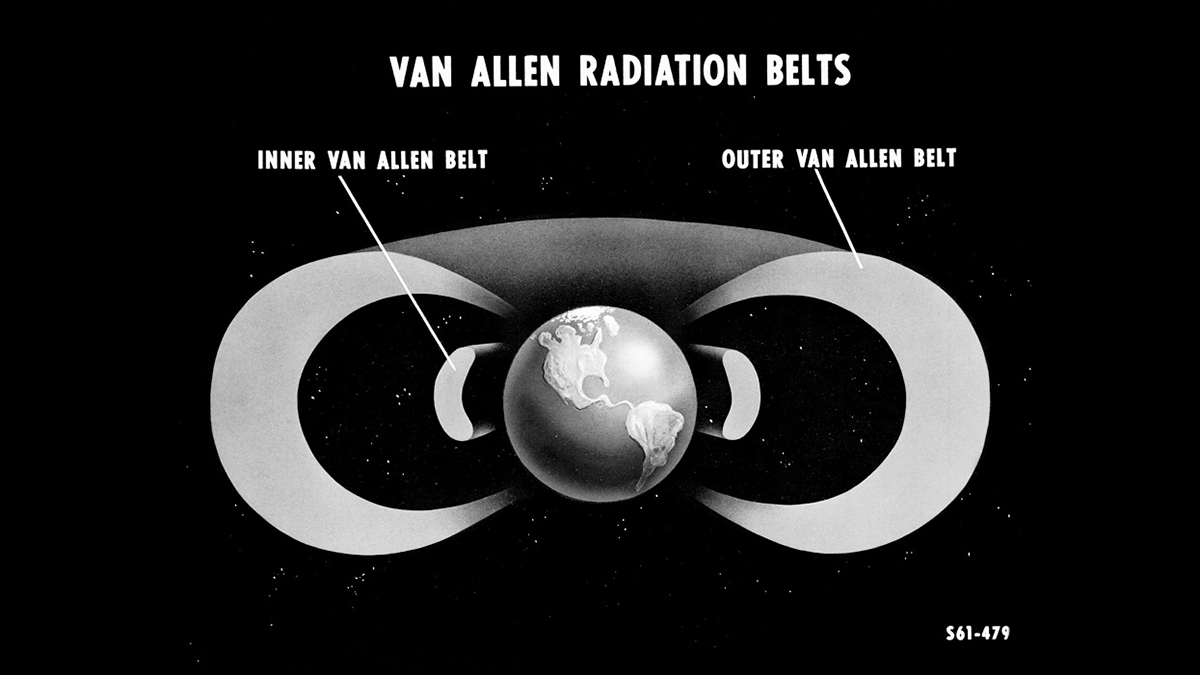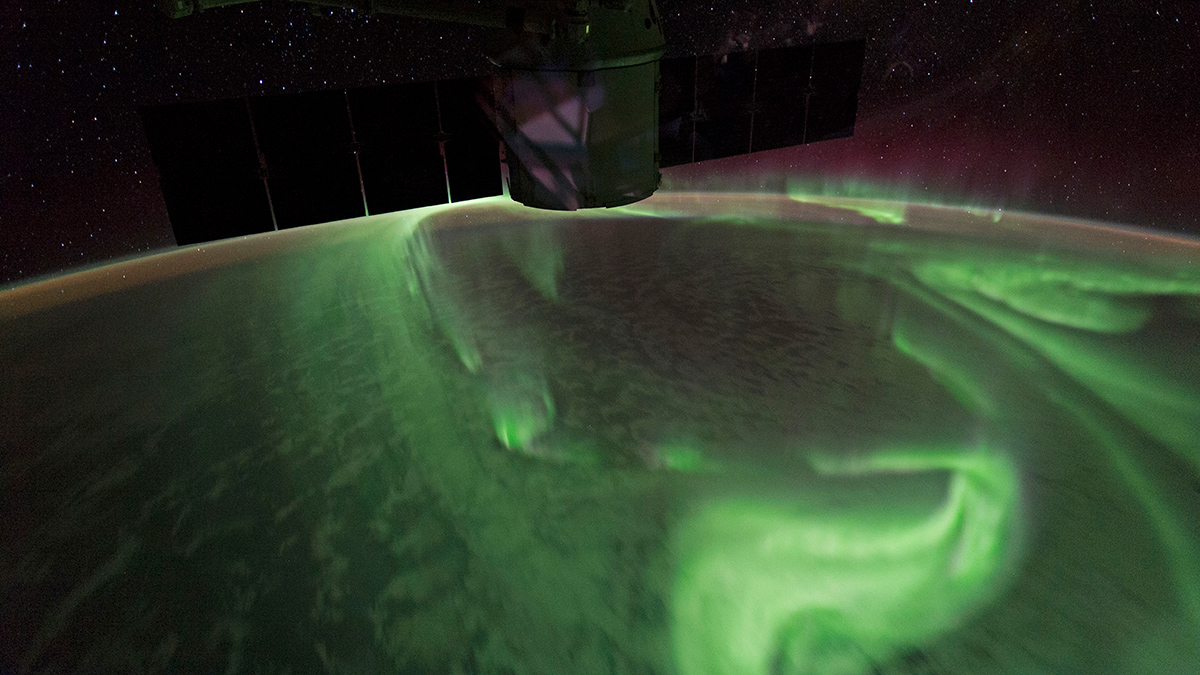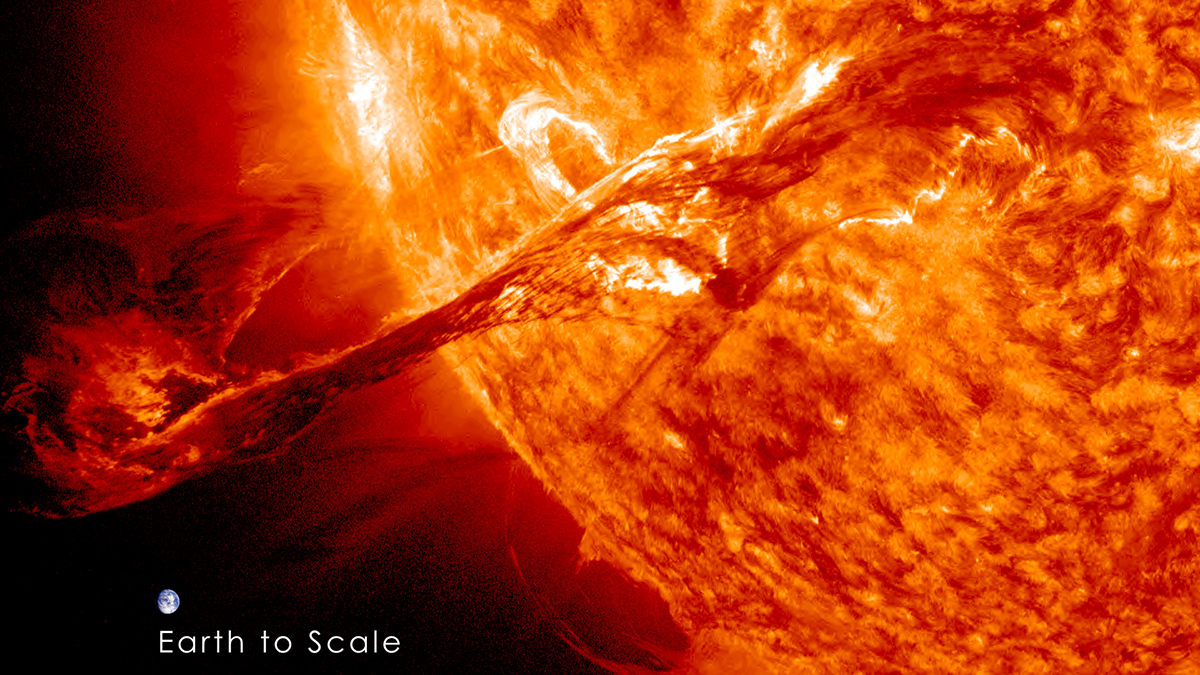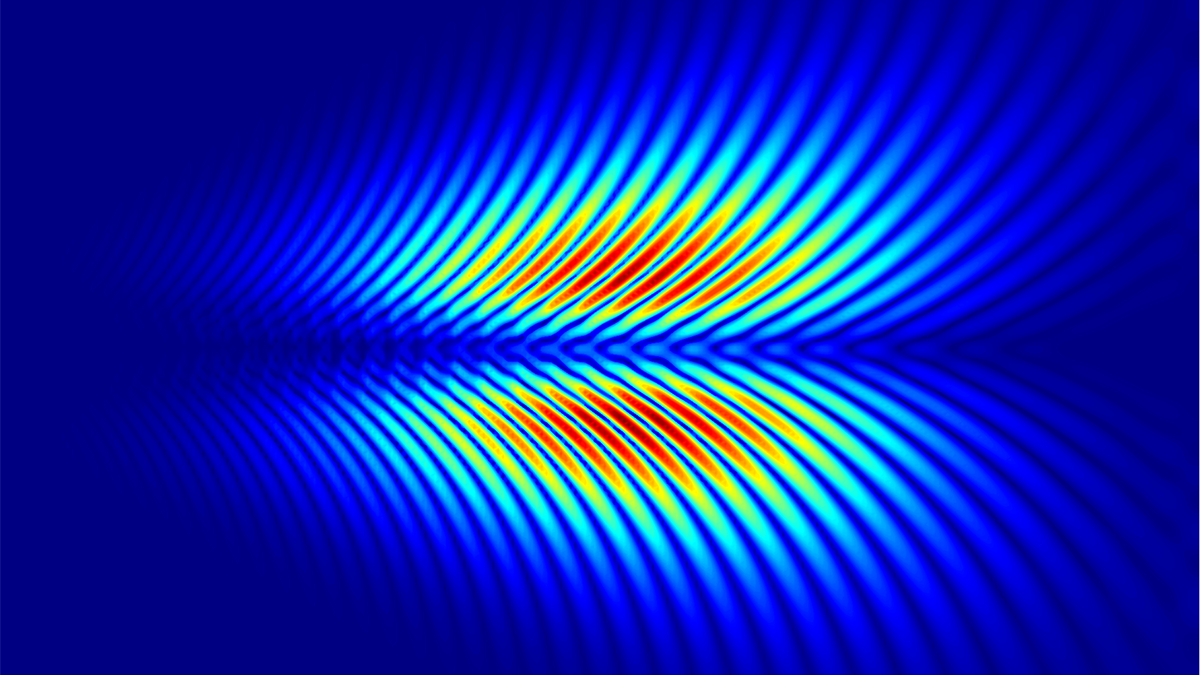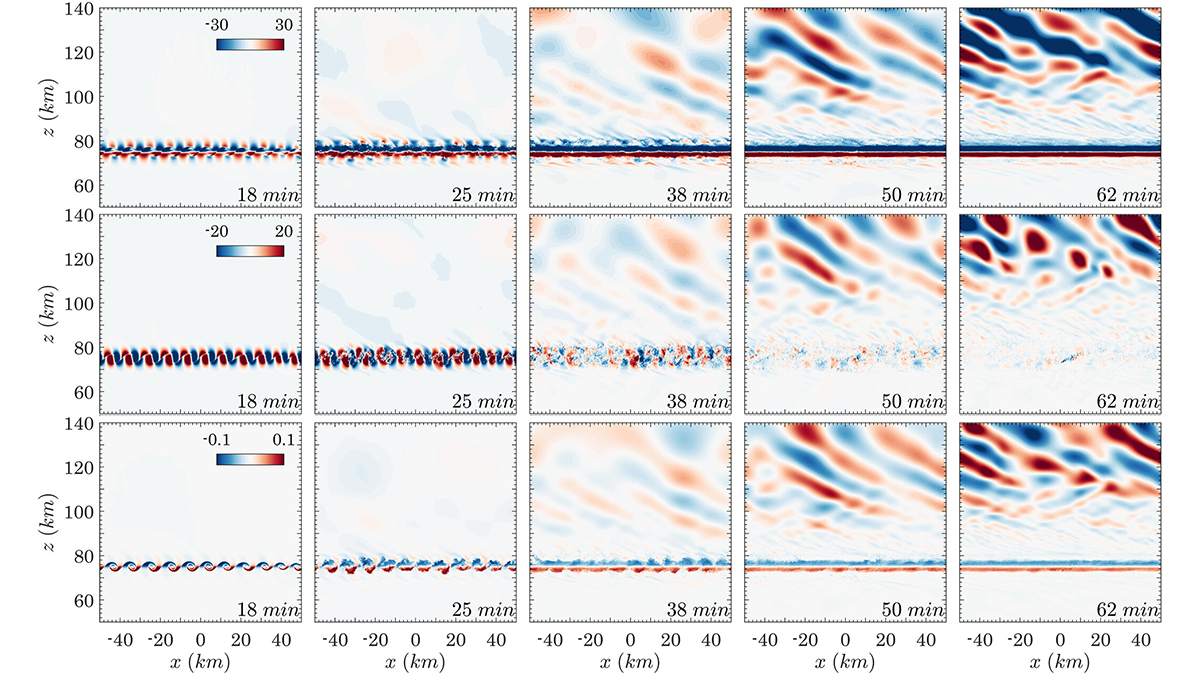A new method could improve understanding of communication disruptions.
plasmas
Audible Storm Waves Could Turbocharge Earth’s Radiation Belts
Electromagnetic chorus waves could generate more extreme radiation levels than previously thought, posing severe hazards for Earth-orbiting spacecraft.
Coronal Mass Ejection Gives Earth’s Magnetosphere Rare “Wings”
A massive disturbance in the solar wind caused Earth’s magnetosphere to fly without its usual tail.
Space Hurricanes Swirl in the Southern Hemisphere, Mostly in Summer
Previous studies of the recently discovered space weather feature focused on the Northern Hemisphere. Dozens hit the Southern Hemisphere each year, new research shows.
Spiral Waves May Explain the Sun’s Baffling Rotation
New observations and models show a connection between high-latitude waves in the Sun’s interior and the different rates of spin between the solar equator and poles.
Exploring Alfvén Waves Across Space—and Disciplines
A new book presents an interdisciplinary review of Alfvén wave research, sharing the latest insights from the solar, planetary, and terrestrial sciences.
Magnetic Tangles Drive Solar Wind
Energetic collisions between magnetic fields produce gusty solar wind.
Eavesdropping on the Vibrations of Earth’s Magnetic Bubble
A NASA-funded crowdsourced science project has converted the unheard sounds resonating inside Earth’s magnetic shield into audible tracks, revealing an orchestra of whistles, wooshes, and chirps.
Wind Shear Instabilities Emit Gravity Waves
A new study shows that atmospheric gravity waves can be generated by the Kelvin-Helmholtz instabilities in the wind shear layer.


